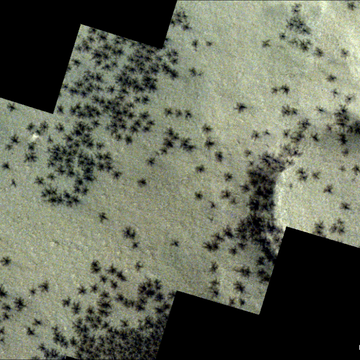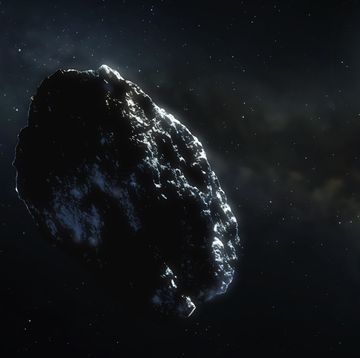NASA has unveiled a timeline for its suddenly-silent Opportunity rover: 45 days. That’s when the craft, which has explored Mars for more than 14 years, will be put on “listen only” mode, effectively shutting down operation of the spacecraft. However, according to anonymous sources within NASA, there is dissent in the ranks over whether that window is too short and could sacrifice a real change to reawaken Oppy, and former Opportunity project leaders tell PM the window is too short.
The rover, which arrived at Mars in 2004, was assigned an original mission of just 90 days. Its sister craft, Spirit, roamed for about five years before becoming permanently stuck in Martian soil. Opportunity has soldiered on for years since then, but was caught up in a global dust storm on Mars this summer. It hasn’t been heard from since June 10. During the course of this storm, the craft didn’t receive enough solar energy to recharge its battery.
The dust storm is clearing, but the craft still hasn’t been heard from. This could be because its solar panels are covered in dust. "The Sun is breaking through the haze over Perseverance Valley, and soon there will be enough sunlight present that Opportunity should be able to recharge its batteries," John Callas, Opportunity project manager at JPL, said in a press release.
To some Mars experts, 45 days isn’t enough. According to a statement sent to reporters by Opportunity engineers, provided on the condition of anonymity, every Martian year Opportunity has encountered a “cleaning event” in which more favorable weather conditions have removed the dust that has gotten lodged on the rover. If that happens again this year, it should start sometime in mid-November
"I am very optimistic that opportunity is still sitting on Mars, charging its batteries, waiting until it’s at the power level to contact us, and I’m terrified that we would miss that," says Mike Seibert, former flight director and rover driver on Opportunity.
NASA has not officially stated when the 45-day window begins, and they may be awaiting the end of the storm, which will come between now and November. The cleaning event could take up to three months to complete. “There is every possibility that the rover will recover to a state which would require active recovery efforts during that period, when the project intends to degrade efforts to a listen-only mode,” the statement from the group of engineers says. It continues:
“These recommendations have been ignored by management in an effort to save money. The likelihood that we will be abandoning a potentially functional rover—a productive and priceless national scientific asset—is significant.”
The end of Opportunity would be the end for a rover that has tracked 28 miles of exploration on the surface of Mars, beginning its journey at Eagle Crater before moving toward the large Endeavour Crater, a site which may have once held a shallow body of water. During its 15 years on the surface, the rover has painted a picture of a once-wet world driven dry by atmospheric loss. In fact, it was the first craft to make the unambiguous detection of past water on Mars. "Mars was effectively seen as a dry barren wasteland when the mission was conceived," Seibert says.
Scott Maxwell, former rover planning lead for Opportunity, agrees with the engineering team. He says their timeline is more realistic. He also points out that NASA spent months—rather than a month and a half—trying to wake up Spirit before giving up.
“This brief 45-day window is entirely incompatible with what we did for Spirit, where we did something like 10 months of active recovery efforts (plus a bit beyond that, less formally),” he says. “Given that Opportunity is in better shape than Spirit was at the time, why not give her at least as good a chance as we gave her sister?”
NASA’s other current Mars rover, Curiosity, runs on nuclear rather than solar power, and was thus unaffected by the storm. Maxwell points out that a 2016 report “ranked Opportunity *higher* than Curiosity” on total science output potential, “but it sure doesn't seem like we'd give up on Curiosity that easily,” he says.
“It would be a dreadful mistake to prematurely abandon a priceless asset on the surface of Mars, especially one that has repeatedly delivered the scientific insights Opportunity has, with the potential to do so much more,” Maxwell says. “After she's given us almost 15 years, we're going to abandon her in 45 *days*?”
NASA headquarters sent its own statement to Popular Mechanics, saying:
“The 45-day timeline, which has not yet begun and will begin when opacity levels drop low enough, was decided based on input from across the Opportunity team. Once the sky’s opacity reaches a low enough level, the agency will decide whether to begin the 45-day listening period. After 45 days of active listening, if no signal is received from the rover, the agency will once again review the situation and seek input from the Opportunity team. Additionally, a passive listening period will extend through January. Each milestone will trigger further review from the agency.”
Still, the January passive listening period may not be good enough. “What would make a lot more sense is to extend active listening through *at least* end of January, falling back to passive listening sometime after that,” Maxwell says.
And if that doesn’t work out? Then, maybe, you can tell Opportunity goodbye.













